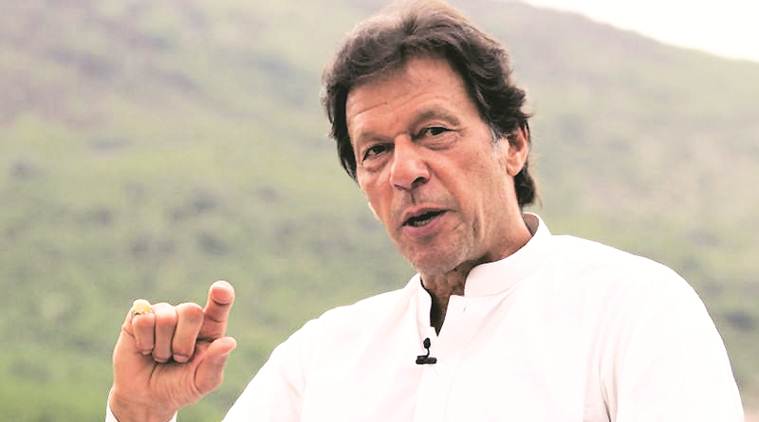 Counter-intuitive and strange it may seem, but the events of August 5, 2019, when the Narendra Modi government revoked the special status of Jammu and Kashmir provided by Article 370, could be a game-changer for Pakistan. Whatever Pakistan may continue to claim, the fact is that the Indian Jammu and Kashmir is no longer a bilateral issue. As Pakistan gets used to the new reality, it could have a huge opportunity.
Counter-intuitive and strange it may seem, but the events of August 5, 2019, when the Narendra Modi government revoked the special status of Jammu and Kashmir provided by Article 370, could be a game-changer for Pakistan. Whatever Pakistan may continue to claim, the fact is that the Indian Jammu and Kashmir is no longer a bilateral issue. As Pakistan gets used to the new reality, it could have a huge opportunity.
Kashmir has been the bedrock of Pak nationalism for decades with slogans such as “Kashmir banega Pakistan”, “unfinished agenda of Partition”, “Pakistan’s jugular”, “core issue with India”, reminding Pakistanis of its centrality. Kashmir acquired greater salience after the creation of Bangladesh shredded the two-nation theory.
Pakistan needed another crutch and that crutch became the “nazaria-i-Pakistan” (Ideology of Pakistan) of which Kashmir was an integral part. As L Ziring puts it: “All of Pakistan was made hostage to the Kashmir conundrum.” The Kashmir card became, and continues to be, an industry in Pakistan and many have thrived on it, developing a vested interest in its continuation. It enabled the Pakistan army to dominate the polity, it allowed the politicians to burnish their nationalistic credentials, the religious lobby could fan anti-Hindu sentiments, and the hapless Pakistani got a break on the various “Kashmir Solidarity Days”.
Perhaps the best explanation for Pakistan’s obsession with Kashmir was provided by Z A Bhutto in his The Myth of Independence (1969) when he wrote: “If a Muslim majority area can remain a part of India, the ‘raison d’etre of Pakistan collapses. For the same reasons, Pakistan must continue unremittingly her struggle for the rights of self-determination.” Though hanged by the army, Bhutto’s enunciation became the foundation of Pakistan’s Kashmir policy. Not surprisingly, Pakistan has spent the last seven decades in revanchist schemes like the “raiders” in 1947, “infiltrators” in 1965, and “freedom fighters” since 1989 and especially in Kargil, in 1999. All of these have borne no fruit except to inject a jihadi culture and radicalise society.
With its nationalist narrative built over decades having been shattered, Pakistan is hitting out in every direction using overt and covert means. Prime Minister Imran Khan’s threatening speeches, his article in The New York Times, warning to explore all possible options, moves in the Security Council, reactivating terrorists are just samples.
However, once the dust settles and Pakistan realises that the events of August 5 are a fait accompli and not going to be reversed, it would have a considerable opening to assess the implications of what has happened and reconsider its policies.
For one, its existence will no longer be hostage to the Kashmir issue. For another, there would be no justification for the army to dominate the security and foreign policy architecture or claim such a major chunk of scarce resources. Third, Pakistan would no longer need the jihadi terrorists and their support infrastructures and so eliminate the possibility of being blacklisted by the Financial Action Task Force (FATF) or be known internationally as a terrorist hub. Gradually, Pakistani society could even reclaim the moderate space that it has surrendered to jihadi elements.
Due to the centrality of the Kashmir issue in Pakistan for decades, the nature of the state itself has changed. From being a “development state” till the mid-1970s, Pakistan has become a “security state” subsequently. As a result, economic development ceased to be the primary agenda of the state. Thus, during the 1970s, the real rate of growth of development expenditure was 21 per cent per annum and the rate of growth of defence expenditure was 2 per cent. During the 1980s, the rate of growth of development expenditure crashed seven-fold to 3 per cent and the rate of growth of defence expenditure escalated almost five-fold to 9 per cent. As a percentage of GDP, development expenditure has been falling from 9 per cent in the 1970s to 7.3 per cent in the 1980s to 4.7 per cent in the 1990s and to 3.5 per cent in the first decade of the millennium to 1.8 per cent in 2018-19. Expenditure on education and health was a paltry 0.25 and 0.5 per cent of GDP respectively in 2018-19 and has further declined to 0.17 and 0.02 per cent for 2019-20.
That Pakistan’s economy is on a slippery slope is well-known and documented. Just by freeing itself of the Kashmir obsession and the resultant financial commitments, Pakistan would be in a position to divert scarce resources to long-term critical development activities. One example would suffice. According to Pakistani experts, the country could become an absolute water scarce country by 2025 (six years from now) when the per capita availability of water will drop to below 500 m3 per annum. To tackle this looming catastrophe, Pakistan needs to provide at least 10 per cent of the federal Public Sector Development Programme (PSDP) to the water sector, gradually increasing it to 20 per cent by 2030. The reality is, however, that due to lack of funds only 3.29 per cent of PDSP was provided for in 2018-19 for the water sector.
There is no doubt that for the Pakistani leadership, and especially the army, to reduce the salience of, let alone jettison, the Kashmir cause would be extremely difficult, unpopular and politically dangerous. It would require extraordinary courage, determination and leadership, qualities in short supply at present. Yet, the choice is stark. Without doing so, Pakistan would accelerate its march towards the abyss.
No comments:
Post a Comment